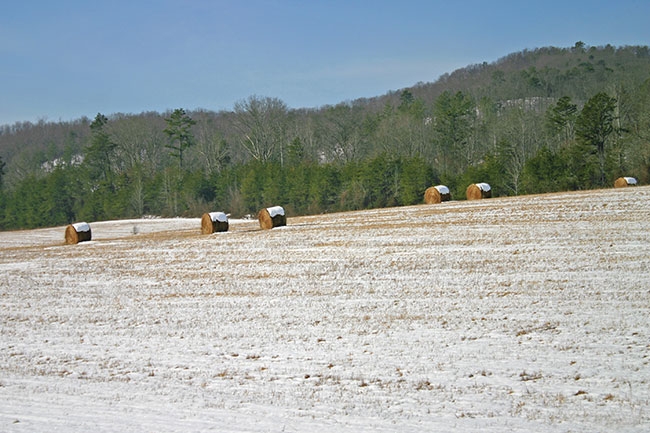
Features
Applications
Manure Application
Manure Minute: Winter manure application: tips from the experts
March 24, 2020 by Chryseis Modderman

Here we go again – another winter where manure application might be unavoidable. Here in Minnesota, winter application is not banned for all operations, and exceedingly wet falls have made it a necessary evil for some producers.
The problem is the struggle between minimizing runoff and logistics. If time runs out for fall applications, storage overflow can become a problem in the winter. Unfortunately, that manure has to go somewhere.
This was the focus of a discussion activity I had with a group of commercial manure haulers: what do you do when faced with dwindling storage space, but fields are too wet, frozen or snow-covered? The goal was for participants – and myself – to learn from each other, and to plumb the deep well of knowledge of applicators who have seen it all. Here is what they came up with:
Tips from commercial applicators
- In a wet fall or spring, saturated fields are a no-go, especially when using a large liquid tanker. Runoff risk is high, and future compaction issues make it unwise (not to mention the likelihood of getting stuck). When asked about applying in saturated soils, the top responses from applicators were “pray that it stops raining” and “wait it out.”
- What if you get pinched between a rock and a hard place and it just won’t stop raining, and ground-freeze or substantial snowfall has occurred? Then it is time to assess storage. Specifically, determine how much manure needs to be moved or applied to avoid storage overflows before spring applications can be made.
- First and foremost, if liquid storage is at risk of overflowing, contact your local environmental quality agency so they are aware and can help you come up with solutions.
- In most places, storage overflow is considered a manure spill, and the appropriate response must be made, including notifying the proper authority.
- Solid manure is relatively easier than liquid to manage in adverse conditions, because temporary stockpiles can be created to stall application. Make sure these temporary stockpiles are in compliance with local rules.
- Whether under wet or winter conditions, if storage is about to be tapped out, manure should be transferred to other storage facilities – if any have room available – or land-applied.
- In general, when conditions are dire, pollutant discharge risk is lower for land application than a storage breach when application sites are carefully chosen. With land applications, you must do all you reasonably can to avoid pollution from contaminated runoff.
- Choosing the right application site to minimize runoff is crucial. Choose the flattest, driest fields possible. Applying to select portions of fields may be the best option. Fields with more residue and furrows will hold manure better than bare fields.
- If possible, incorporate or inject the manure into the soil to lower runoff risk.
- Follow setback requirements. Under winter conditions, the required setback from most sensitive features in Minnesota is 300 feet. It is also best practice to adopt this setback in wet conditions.
- Make sure you are applying appropriate nutrient rates and following your local guidelines. If applying on top of snow or frozen soil, reduced application rates may be more appropriate.
- Do not apply when a large rain or snowmelt event is expected in the next 24 to 48 hours.
- Be aware of additional restrictions that may depend on your operation’s permit. For example, in Minnesota if you have a National Pollutant Discharge Elimination System (NPDES) or State Disposal System (SDS) permit, you may not be allowed to apply liquid manure after Nov. 30, unless your situation is deemed an emergency according to the conditions of the permit.
- As always, even in the hectic fall season, safety should not be neglected. Be mindful of dangerous gases, equipment hazards and fatigue to keep you, your loved ones and your operation safe and thriving.